Watermelon is one of the most iconic and refreshing fruits of summer, but many people don’t realize just how diverse this fruit can be. From small, personal-sized melons to massive picnic varieties, the types of watermelon plants available to home gardeners and commercial growers alike are incredibly varied. Each type comes with its own unique traits—from rind color and flesh texture to flavor and growth habits.
In this guide, we’ll explore 35 different types of watermelon plants, complete with pictures and names to help you identify and choose the perfect variety for your garden. Whether you’re interested in growing sweet red-fleshed melons, rare orange or yellow types, or compact varieties for small spaces, there’s a watermelon plant to suit every need and growing condition.
Learning about the different types of watermelon plants not only helps you understand their individual characteristics, but also improves your chances of a successful harvest. By selecting the right variety for your climate and space, you can enjoy juicy, flavorful watermelons all summer long—straight from your own backyard.
Different Types of Watermelon Plants
Sugar Baby

Sugar Baby is a compact, early-maturing watermelon variety that’s ideal for small gardens or container growing. It typically produces round fruits weighing between 8 to 10 pounds, with a smooth, dark green rind. The flesh is vibrant crimson red, known for its intense sweetness and crisp texture.
This variety performs well in USDA hardiness zones 3 through 11, thriving in full sun and well-drained sandy loam soil. The vines are relatively short and manageable, making them perfect for limited growing spaces. Regular watering is important during flowering and fruit development, and mulch helps conserve moisture.
Sugar Baby melons are usually ready for harvest in about 75 to 80 days from planting. Ripe fruits will have a creamy yellow underside and a dried tendril near the stem. Harvest at peak ripeness for the best flavor and enjoy the fruits fresh or chilled.
Crimson Sweet
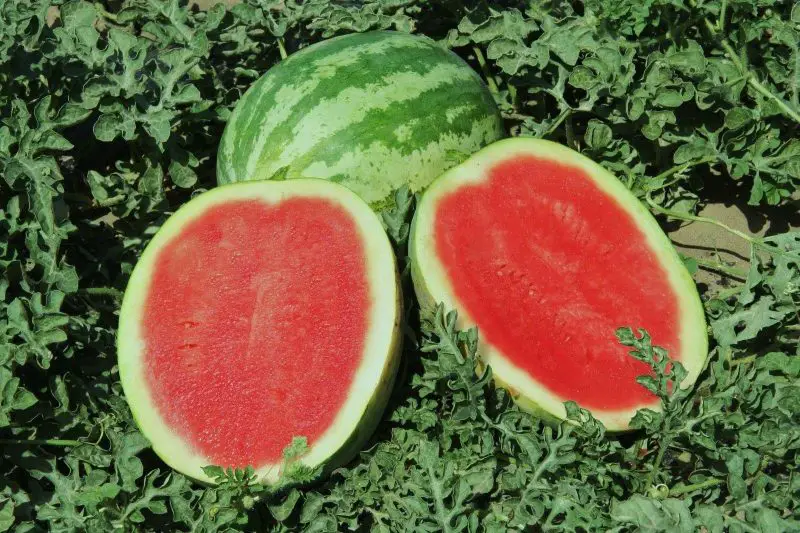
Crimson Sweet is a popular variety recognized for its striking light and dark green striped rind. The fruits typically weigh 20 to 25 pounds and contain juicy, bright red flesh with a high sugar content. This variety is appreciated for its refreshing flavor and crisp bite.
It grows best in USDA zones 4 through 11 and needs full sunlight and fertile, well-draining soil. Crimson Sweet has moderately long vines and requires enough space to spread. It is also resistant to common diseases like fusarium wilt and anthracnose, making it a strong performer in many gardens.
Fruits mature in about 80 to 85 days. Signs of ripeness include a yellowish spot on the bottom of the fruit and a dry, curling tendril near the stem. This watermelon stores well for a short period and is perfect for slicing, juicing, or picnics.
Charleston Gray
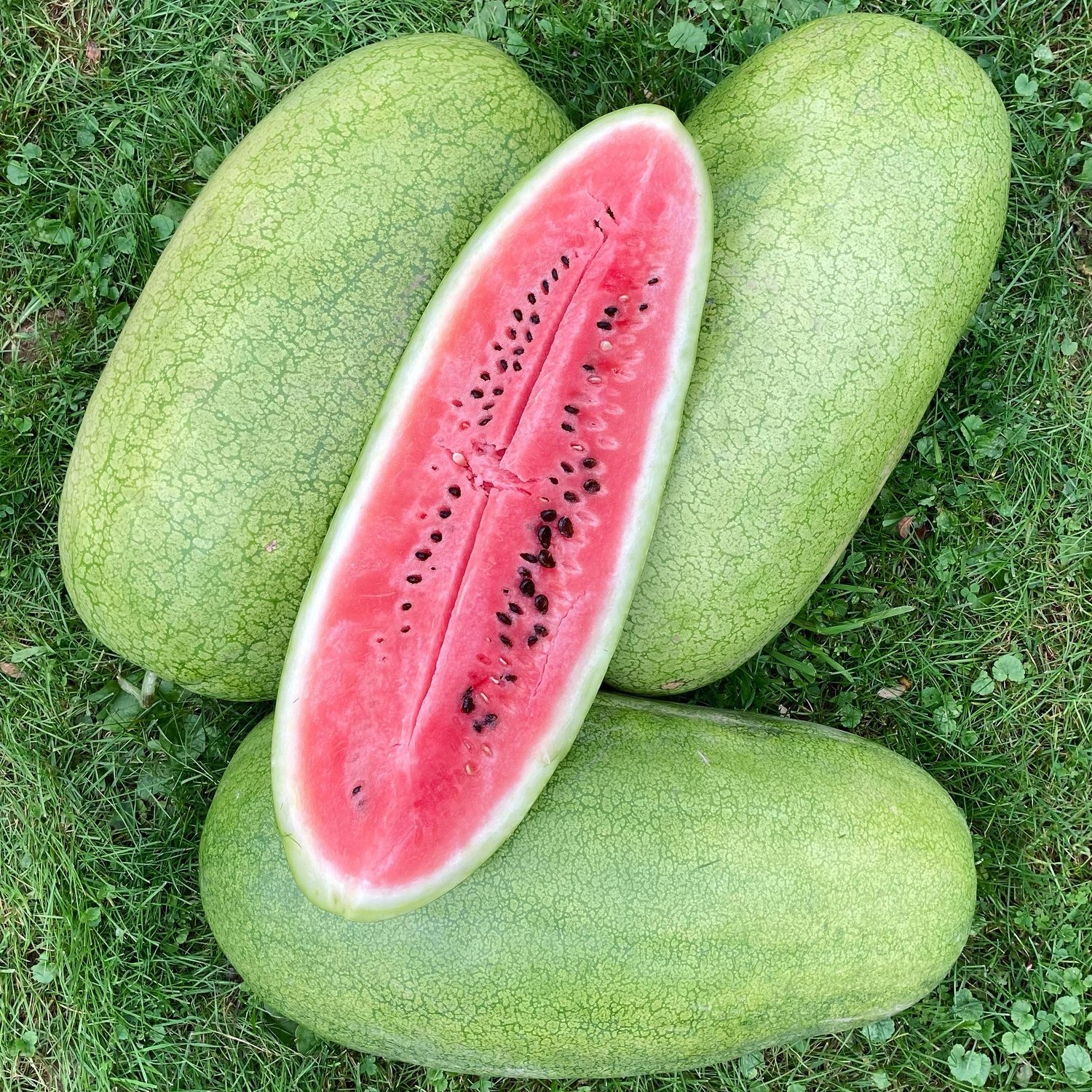
Charleston Gray is an oblong watermelon known for its pale gray-green rind that provides excellent protection for its sweet red flesh. The fruits generally weigh between 25 and 35 pounds and are firm, juicy, and flavorful. This variety is a staple in many Southern gardens.
It performs best in USDA hardiness zones 4 through 11 and requires full sunlight along with sandy, slightly acidic soil. The vines are vigorous and need ample space to spread, making them suitable for large garden plots. It also offers good resistance to anthracnose and fusarium wilt.
This variety takes about 85 to 90 days to mature. Look for a dry tendril and a dull, yellowish spot underneath the fruit as indicators of ripeness. Charleston Gray stores and transports well thanks to its thick rind and firm flesh.
Black Diamond

Black Diamond is a traditional favorite known for its large, round shape and nearly black rind. The fruits are typically 30 to 50 pounds in weight and contain rich, deep red flesh with a sweet, juicy flavor. It’s a striking variety often grown in home gardens and small farms.
This watermelon thrives in USDA zones 4 through 10 and needs full sun, warm temperatures, and well-drained soil. The vines are sprawling and should be given plenty of space to grow. Consistent watering is important during fruit development to prevent cracking and encourage even ripening.
Black Diamond matures in about 90 to 95 days. Check for a creamy yellow bottom spot and a dry stem tendril to determine when the fruit is ripe. Best eaten fresh, this variety is also great in salads, smoothies, and cold desserts.
Jubilee
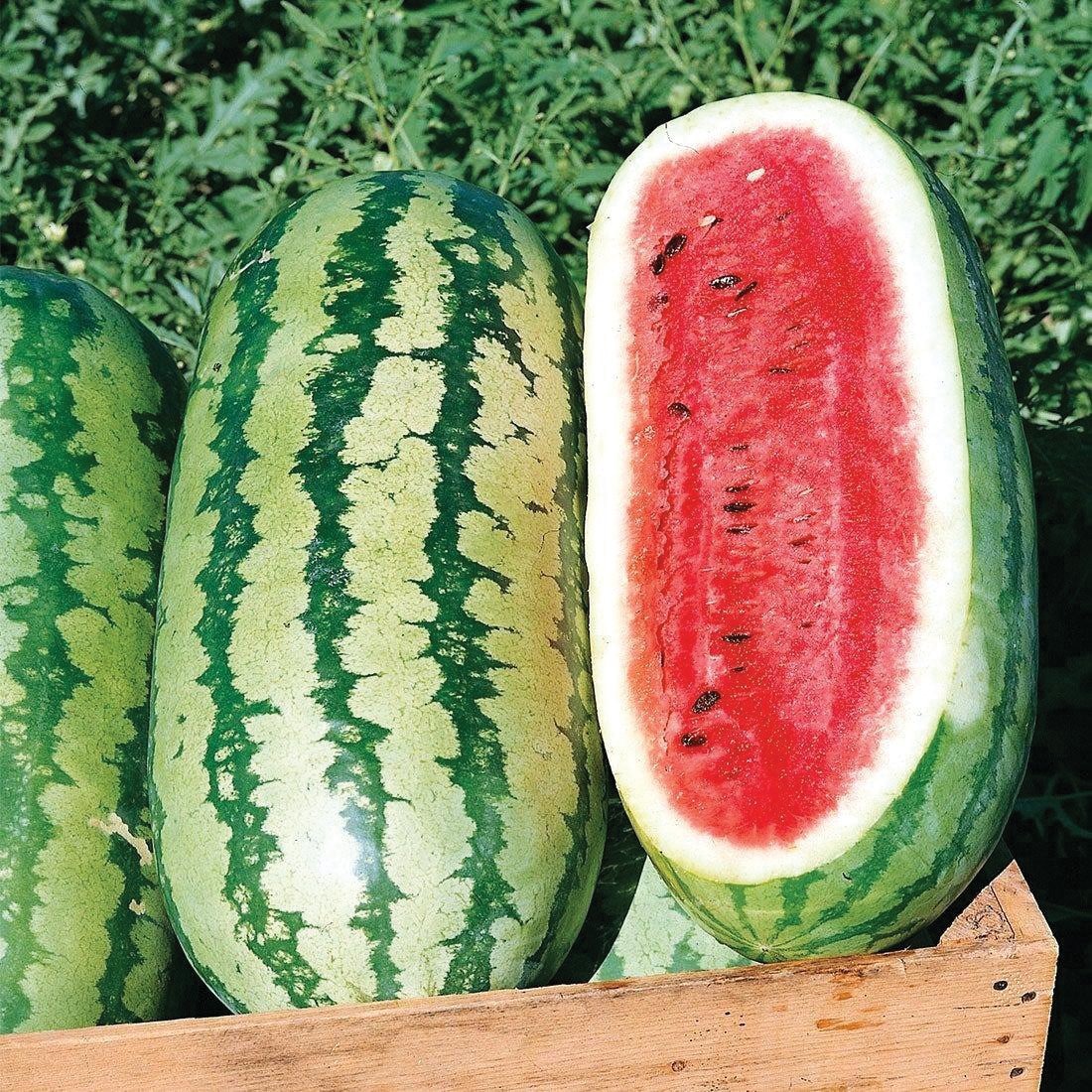
Jubilee is a classic watermelon variety with long, oval-shaped fruits and distinctive light and dark green stripes. It grows large, up to 35 or even 40 pounds, and is loved for its crisp texture and exceptionally sweet red flesh. This variety is especially popular in warm, Southern climates.
It grows well in USDA zones 4 to 11, needing full sun and loose, fertile soil. Jubilee vines are vigorous and should be spaced widely to ensure proper airflow and room for growth. Adding mulch can help control weeds and retain soil moisture during hot months.
The fruits take around 90 days to mature. Ripeness is indicated by a yellowish underside and a dry, curled tendril. Jubilee is a perfect watermelon for slicing, large gatherings, or backyard barbecues, and it holds up well for short-term storage.
Moon and Stars
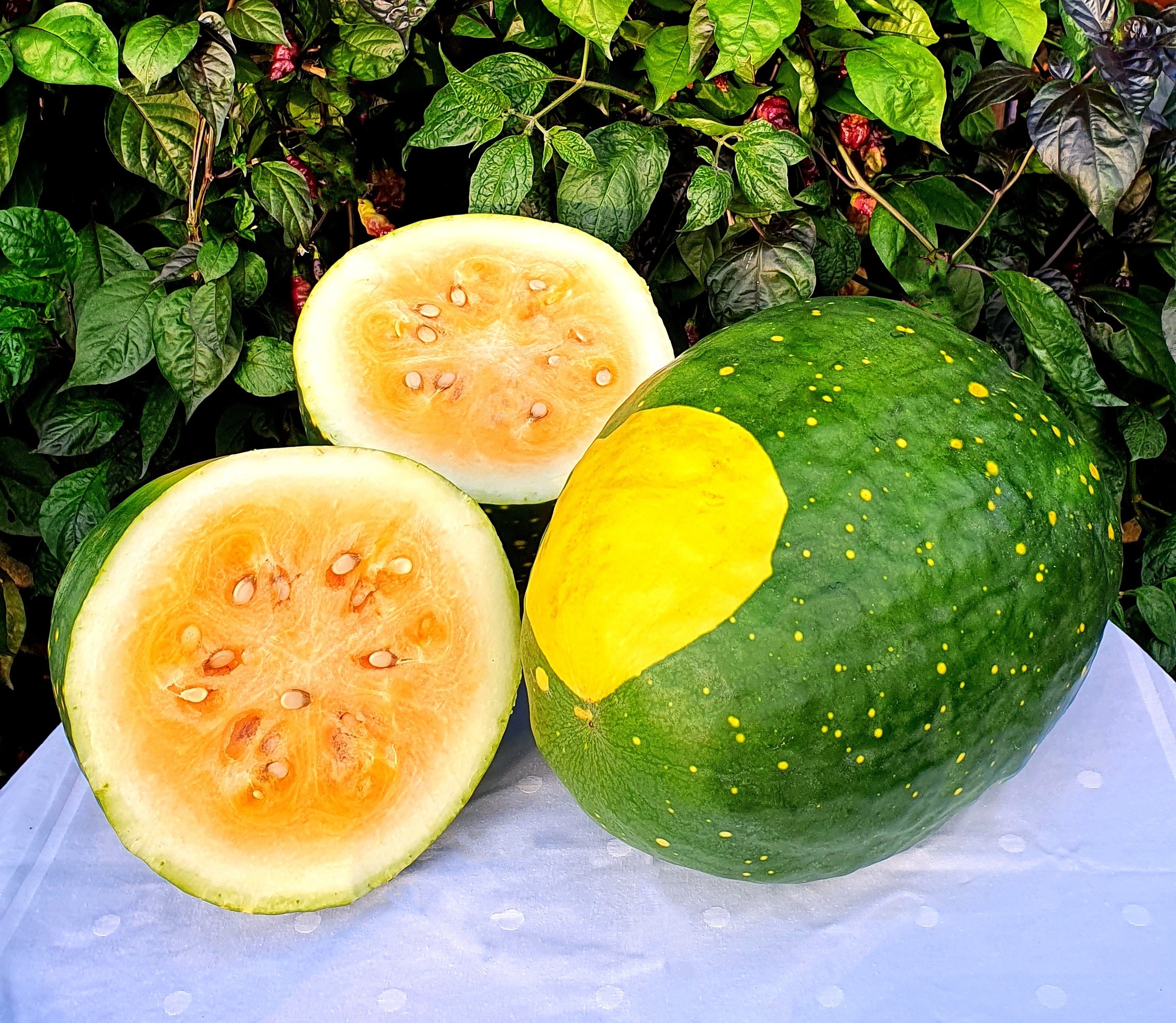
Moon and Stars is a visually unique heirloom watermelon, famous for its dark green rind dotted with tiny yellow spots (“stars”) and one large yellow blotch (“moon”). The fruits typically weigh 25 to 40 pounds and contain pink-red flesh that is sweet and juicy.
This variety thrives in USDA zones 4 through 10 and grows best in full sun with rich, well-draining soil. The vines are long and need ample space, so it’s ideal for open garden beds. Moon and Stars is open-pollinated, and fruit appearance may vary slightly, adding to its heirloom charm.
Maturity occurs in about 90 to 100 days. A yellow spot on the bottom and a dried stem tendril indicate ripeness. This watermelon is not only delicious but also adds ornamental beauty to any garden and is often a conversation starter at harvest time.
Yellow Crimson
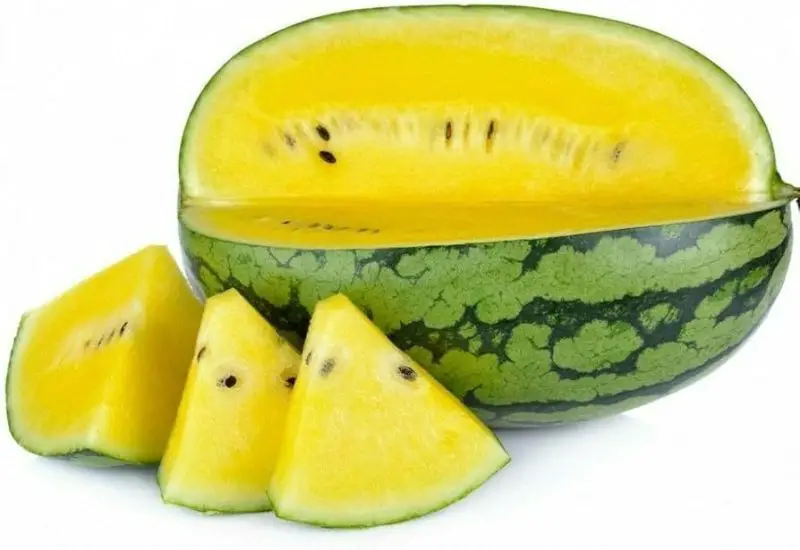
Yellow Crimson is a vibrant twist on the traditional Crimson Sweet, featuring golden yellow flesh instead of red. The rind still displays the classic green striping, and the fruit typically weighs between 20 to 25 pounds. Its flavor is tropical and honey-like, offering a delightful surprise to those used to red-fleshed varieties.
It grows well in USDA zones 4 through 11, needing full sun and nutrient-rich, well-drained soil. The vines are moderately long and benefit from regular watering and wide spacing. Yellow Crimson is also resistant to some common watermelon diseases, making it a reliable garden choice.
This variety matures in about 80 to 85 days. To determine ripeness, look for a yellow patch on the fruit’s underside and a dried tendril near the stem. It’s a great choice for slicing, fresh eating, and adding a colorful touch to fruit salads or dessert platters.
Orangeglo
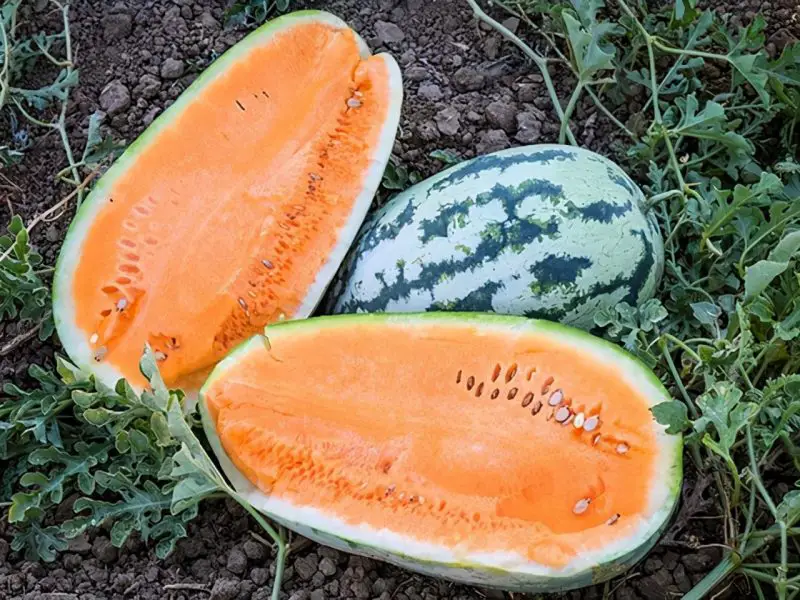
Orangeglo is a stunning watermelon variety known for its vibrant orange flesh and sweet, citrusy flavor. The fruits are oblong and typically weigh between 20 to 30 pounds, with a light green rind that features subtle striping. Its juicy texture and unique color make it a favorite among home gardeners and fruit enthusiasts.
This variety performs best in USDA zones 4 to 10 and thrives in full sunlight with warm temperatures. Orangeglo vines are vigorous and need ample space to sprawl. Provide consistent watering, especially during flowering and fruit formation, to achieve optimal fruit size and sweetness.
Orangeglo takes about 90 to 100 days to reach maturity. Check for ripeness by observing the creamy yellow field spot and a dry, curling tendril. This watermelon is excellent for fresh eating, summer gatherings, and taste-testing side-by-side with red or yellow varieties.
Golden Midget
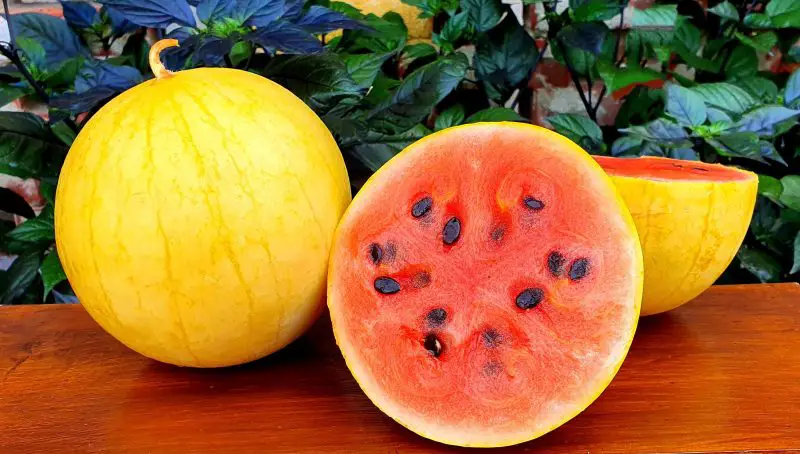
Golden Midget is a compact and early-maturing watermelon that’s perfect for small gardens or container growing. The fruits are small, about 3 pounds each, with a bright golden-yellow rind and pink, sweet flesh. Its unique appearance and fast growth make it ideal for gardeners looking for quick results.
It grows well in USDA hardiness zones 3 through 11 and prefers full sun with well-drained soil. The plant has short vines and requires minimal space, making it suitable for urban gardening or raised beds. Golden Midget is also known for turning golden when ripe, making harvest time easy to determine.
This variety matures in just 70 days, one of the earliest among all watermelon types. Look for the full golden color and a dry stem tendril to ensure ripeness. Enjoy this petite melon fresh, chilled, or even as a charming addition to fruit trays.
Blacktail Mountain
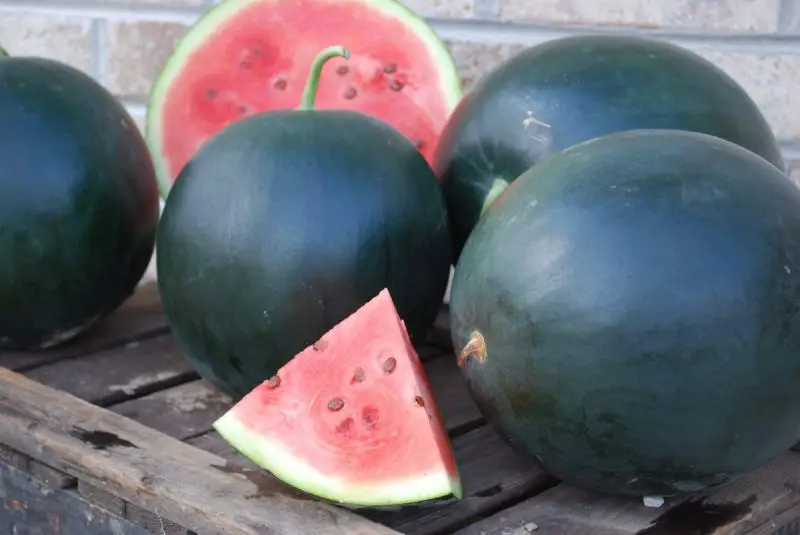
Blacktail Mountain is a hardy watermelon variety specifically bred to perform well in cooler climates. It produces small, round fruits with dark green rinds and deep red, sweet flesh. Weighing around 6 to 12 pounds, these melons pack a lot of flavor into a compact size.
This variety is ideal for USDA zones 3 through 9 and can handle shorter growing seasons thanks to its early maturity. It grows best in full sun and well-drained soil, though it tolerates cooler nights better than most watermelons. The vines are medium in length and benefit from moderate spacing.
Blacktail Mountain matures in about 70 to 75 days. Signs of ripeness include a dulling of the rind and a yellow spot on the underside. This variety is perfect for northern gardeners and is great for fresh eating or early summer harvests.
Desert King

Desert King is a drought-tolerant watermelon variety well-suited for hot, arid regions. It produces large, round to oval fruits with pale green skin and bright yellow flesh. Weighing up to 20 pounds, Desert King offers a mild, sweet flavor that’s refreshing on hot days.
It grows best in USDA zones 5 through 10 and thrives in full sun with sandy, well-drained soil. Because of its drought resistance, it’s a popular choice in the Southwest and other dry climates. The vines are vigorous and should be watered deeply but less frequently to encourage deep rooting.
This variety matures in about 85 to 90 days. Ripe fruits will show a creamy yellow field spot and a dry tendril. Desert King is great for gardeners looking for reliability in harsh conditions, and it offers a lovely contrast in color and taste to traditional red watermelons.
Cream of Saskatchewan

Cream of Saskatchewan is a rare heirloom watermelon originally from Canada, recognized for its creamy white flesh and crisp, sweet taste. The fruits are small to medium-sized, usually weighing between 8 to 12 pounds, with thin green rinds marked by dark stripes.
This variety is ideal for USDA zones 3 through 9, especially in regions with shorter summers. It thrives in full sun and well-draining soil. The vines are fairly vigorous and should be given moderate room to spread. Due to its thin rind, it’s best enjoyed fresh and soon after harvest.
Cream of Saskatchewan matures in about 80 to 85 days. When ripe, the fruit will have a yellowish underside and a dry stem tendril. Its unique white interior makes it a conversation piece, and the sweet flavor is especially refreshing when chilled.
Sweet Beauty

Sweet Beauty is an award-winning watermelon variety recognized by All-America Selections (AAS) for its outstanding flavor and performance. The fruits are oval-shaped, typically weighing between 6 to 12 pounds, with a dark green rind and rich red flesh that’s exceptionally sweet. Its smooth texture and balanced sugar content make it a favorite among home growers.
This variety thrives in USDA hardiness zones 4 through 10 and is appreciated for its early maturity. It usually ripens within 75 to 80 days and grows well in full sun with fertile, well-drained soil. Sweet Beauty also shows resistance to common diseases like anthracnose and fusarium wilt, adding to its garden reliability.
To harvest, wait until the rind dulls slightly and the tendril near the stem dries. Its compact vine structure makes it suitable for smaller garden spaces or trellised growth. Whether enjoyed fresh or sliced for a summer snack, Sweet Beauty lives up to its name with flavor and charm.
Sangria
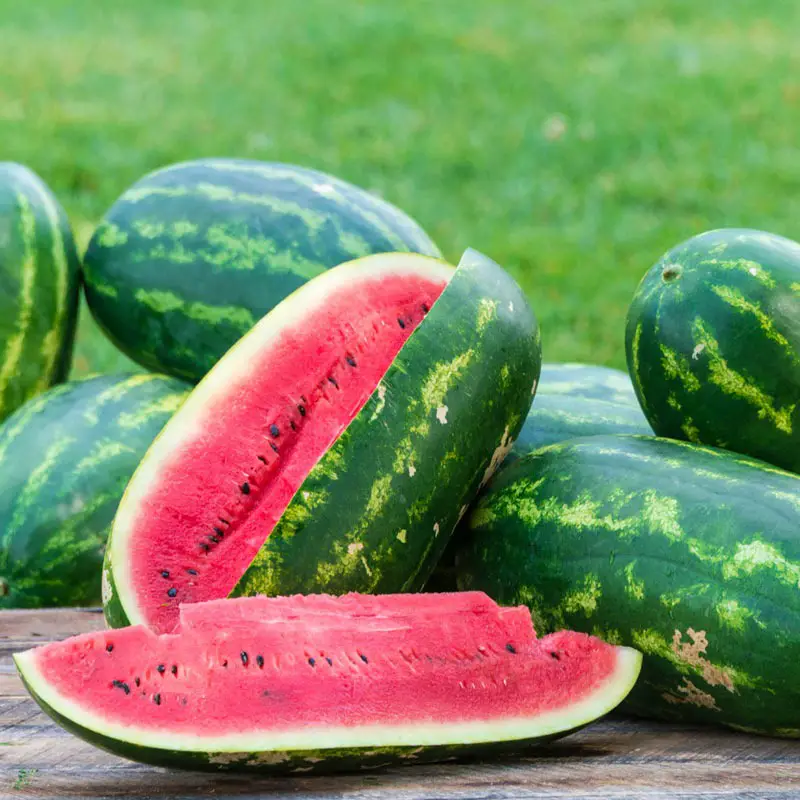
Sangria is a highly productive hybrid watermelon known for its striped rind and oblong shape. Fruits can reach up to 25 pounds and are filled with crisp, bright red flesh that’s incredibly sweet. With a thin but strong rind, it’s also a great choice for transportation or farmer’s markets.
It performs best in USDA zones 3 through 11 and does well in full sunlight with warm temperatures. Sangria is appreciated for its disease resistance and uniform fruiting, making it a reliable option for commercial growers and home gardeners alike. The plants require ample space, as the vines are vigorous.
The fruits typically mature in 85 to 90 days. Check for a yellow ground spot and dry tendril to determine ripeness. This variety is perfect for slicing, picnics, and summer barbecues due to its crisp texture and consistent sweetness.
Georgia Rattlesnake
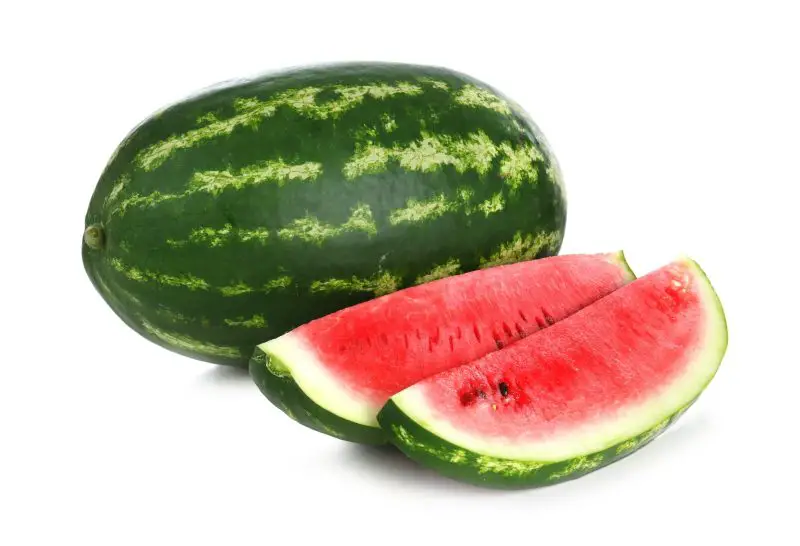
Georgia Rattlesnake is a classic heirloom watermelon from the American South, easily recognized by its long shape and dark green stripes. The rind resembles the pattern of a rattlesnake, and the fruit can reach an impressive size of 30 to 35 pounds. Its interior features juicy, sweet red flesh that has an old-fashioned, refreshing taste.
Best suited for USDA zones 4 through 10, Georgia Rattlesnake needs full sun and fertile, sandy soil to thrive. The vines grow long and require plenty of space in the garden. While it lacks hybrid disease resistance, it’s still prized for its historical significance and bold flavor.
This variety matures in about 85 to 90 days. Look for a creamy yellow spot and a curling, brown tendril near the stem to identify when it’s ripe. Georgia Rattlesnake is a great centerpiece melon and perfect for large family gatherings or summer festivals.
Bush Sugar Baby

Bush Sugar Baby is a compact version of the classic Sugar Baby watermelon, offering all the same sweet traits in a smaller growth habit. The fruits are round, about 6 to 10 pounds, with deep green rinds and intensely red, sugary flesh. It’s ideal for container growing or small garden spaces.
It thrives in USDA zones 3 through 11 and matures in just 75 days, making it a reliable and quick-yielding choice. The bush-type growth requires less space than traditional vining watermelons, which is especially beneficial in urban or balcony gardens. It prefers full sun and rich, well-drained soil.
To harvest, wait for the rind to turn dull and a tendril near the fruit stem to dry out. Bush Sugar Baby is great for fresh eating, and its compact size fits easily in the fridge—perfect for single households or small families.
Mickeylee
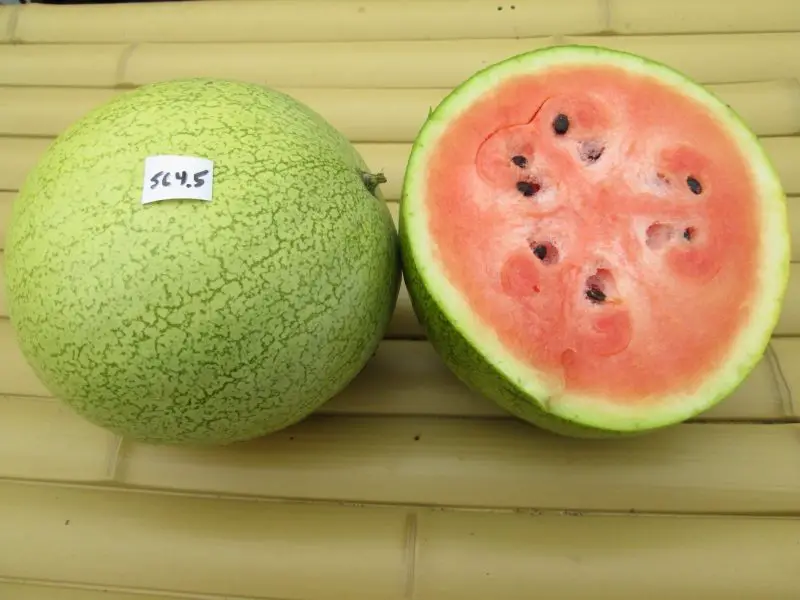
Mickeylee is a hybrid watermelon that stands out for its excellent disease resistance and uniform production. The fruits are round to oval and usually weigh between 12 to 20 pounds. Its red flesh is fine-textured, crisp, and sweet, making it an attractive option for fresh markets or home gardens.
This variety does well in USDA zones 4 through 10 and shows strong resistance to fusarium wilt and anthracnose, both of which can devastate other watermelon crops. It requires full sun, warm temperatures, and well-drained soil for best results. Mickeylee’s vigorous vines also support a healthy fruit set.
Mickeylee matures in about 80 to 85 days. Gardeners can expect a consistent shape and taste from each fruit. With its combination of flavor and durability, this hybrid is a dependable option for both new and experienced growers.
Sweet Favorite

Sweet Favorite is a high-performing hybrid variety known for its crisp, red flesh and strong, sweet flavor. The oblong fruits typically weigh 20 to 25 pounds and have a green-striped rind. With a firm texture and vibrant color, they’re perfect for slicing and summer celebrations.
It grows best in USDA zones 4 to 10 and benefits from full sun and a well-prepared, nutrient-rich soil. This variety also exhibits good resistance to common watermelon diseases, including fusarium wilt and anthracnose, giving gardeners peace of mind throughout the growing season.
Sweet Favorite ripens in 80 to 85 days. Ripe fruits display a yellow underside and a dry tendril. Its consistently sweet taste and solid performance make it a go-to choice for growers who want great flavor without sacrificing reliability.
Allsweet
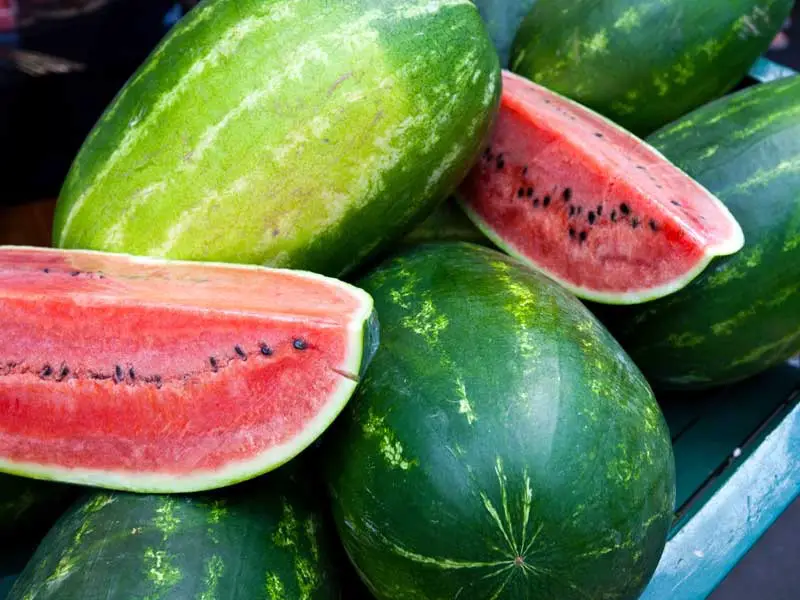
Allsweet is a refined version of the classic Jubilee watermelon, bred for improved disease resistance and more uniform fruiting. The melons are long and cylindrical, often reaching 25 to 30 pounds. They have dark green stripes, firm red flesh, and a sweet, refreshing flavor.
Ideal for USDA hardiness zones 4 through 10, Allsweet thrives in warm climates with full sun exposure. It resists fusarium wilt, making it a solid performer even in areas prone to soil-borne diseases. The vines are vigorous and require ample space to spread out.
Fruits mature in approximately 90 days. To harvest at peak ripeness, check for a yellowing ground spot and a dried tendril near the stem. Allsweet is perfect for backyard gardens and is often used for slicing and fresh summer enjoyment.
New Orchid
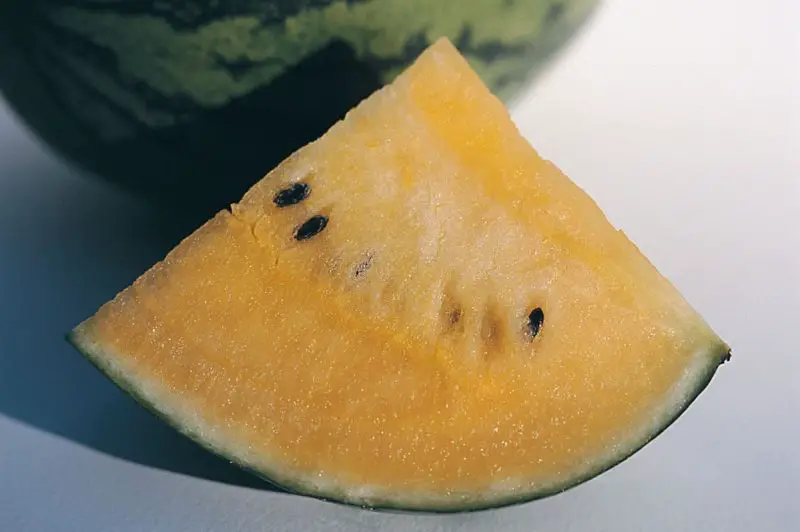
New Orchid is a striking watermelon variety that features bright yellow flesh with a juicy, crisp texture. Its flavor is slightly tropical, with hints of honey and melon. The fruits are round to oval, weighing around 10 to 15 pounds on average.
It grows best in USDA zones 4 to 10 and matures in about 80 to 85 days. New Orchid requires full sun, well-drained soil, and regular watering during dry periods. It’s a dependable variety for gardeners looking to grow something a little different from the traditional red-fleshed types.
The rind remains green with subtle striping, and the contrast with the yellow interior is visually appealing. Once mature, it’s best harvested when the rind dulls and the tendril near the stem dries. New Orchid is great for fresh eating or adding color to fruit salads.
Tendersweet Orange
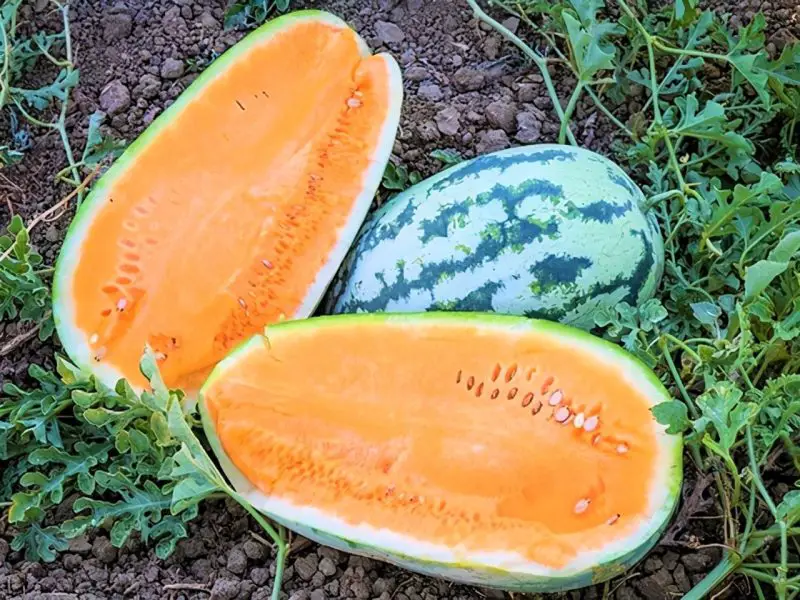
Tendersweet Orange is a unique watermelon with light green skin and vibrant orange flesh. The flesh is tender, sugary, and nearly fiberless, making it a delight to eat. The fruits are long and can grow quite large—often up to 35 pounds.
This variety performs well in USDA zones 4 through 10 and matures in about 85 to 90 days. It grows best in sandy, well-drained soils with full sun. Tendersweet Orange is not only favored for its flavor but also its novelty, as orange-fleshed watermelons are still relatively rare.
When harvesting, look for a creamy yellow spot on the bottom and a dried stem tendril to indicate ripeness. Its mild and sweet flavor makes it perfect for fresh consumption and juicing, while its unusual color adds visual interest to summer spreads.
Congo

Congo is a traditional watermelon variety known for its large size and excellent flavor. The fruits are oblong and can weigh up to 40 pounds, with a thick green rind and deep red, juicy flesh. Its sweetness and firm texture make it ideal for fresh eating.
Best suited for USDA hardiness zones 4 to 10, Congo is also known for its strong resistance to anthracnose and other diseases. It needs full sun and well-draining soil to flourish, and the vines are robust, often sprawling over a wide area.
Congo watermelons typically mature in 90 to 95 days. Gardeners can identify ripeness by checking for a dull rind and a dried tendril near the stem. Its consistent performance and sweet flavor make it a top pick among heirloom growers.
Jade Star
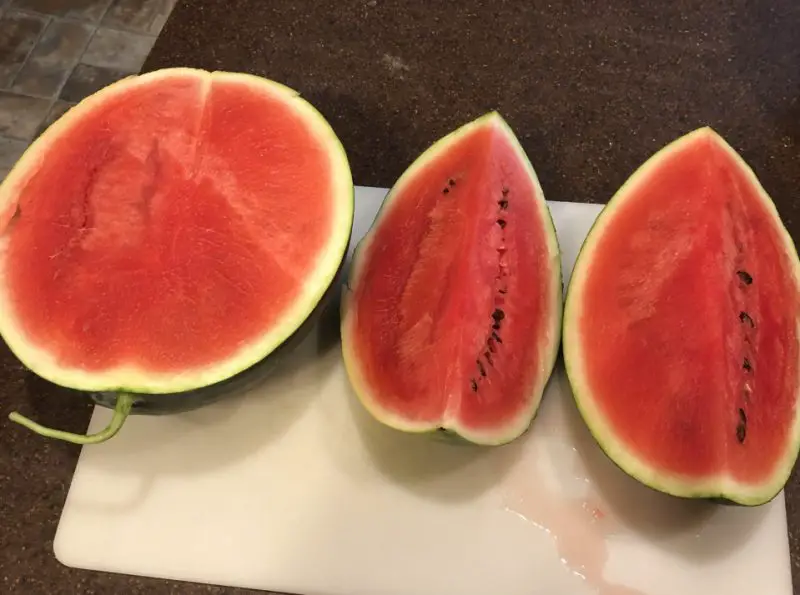
Jade Star is a hybrid watermelon valued for its sweet red flesh and high yield. The fruits have a dark green rind and a round to oval shape, usually weighing 15 to 20 pounds. Inside, the flesh is dense, crisp, and deliciously sweet, making it ideal for fresh slicing.
This variety thrives in USDA zones 3 through 10, with maturity typically reached in 80 to 85 days. It requires full sun, fertile soil, and consistent moisture throughout the growing season. Jade Star is popular among commercial growers for its uniform size and dependable performance.
Jade Star’s fruits maintain their quality well after harvest and have good shelf life. Once the underside of the melon turns yellow and the tendril near the stem curls and dries, it’s ready to be picked. It’s a reliable choice for markets, picnics, and home gardens.
Triple Crown
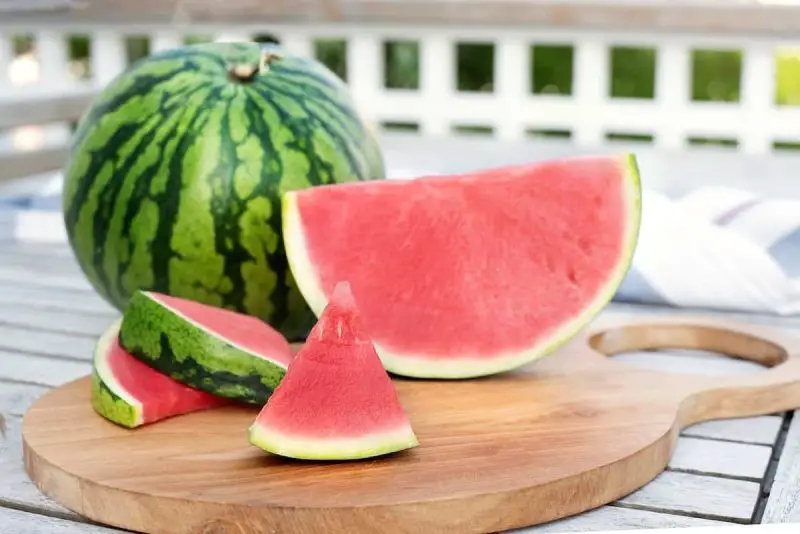
Triple Crown is a seedless hybrid watermelon bred for superior taste and productivity. It produces dark green, oval-shaped fruits that weigh between 15 to 20 pounds. The flesh is bright red, sweet, and juicy, offering the perfect balance of sugar and crunch.
It’s best grown in USDA hardiness zones 4 through 10 and matures in about 85 to 90 days. Like other seedless varieties, it requires a pollinator plant nearby to produce fruit. Triple Crown grows vigorously and is resistant to several common watermelon diseases.
For best results, provide well-drained soil, full sun, and regular watering. Harvest when the bottom spot turns creamy yellow and the stem tendril is dry. Triple Crown is a premium variety that combines excellent flavor with seedless convenience—perfect for family gatherings and kids.
Summer Flavor 800

Summer Flavor 800 is an early-maturing hybrid that produces attractive melons with striped green rinds and sweet, juicy red flesh. Known for its excellent flavor and reliable performance, this variety is popular among commercial growers for its uniform fruit size and shape.
It grows well in USDA hardiness zones 4 through 10 and typically matures in 75 to 80 days. The plants are vigorous and perform best in warm, sunny conditions with well-drained soil. Regular watering and weed control help maximize fruit development and sweetness.
Thanks to its consistent size and sweetness, Summer Flavor 800 is ideal for market sales and large-scale production. Melons are ready for harvest when the bottom turns creamy yellow and the tendril near the stem dries out.
Amarillo
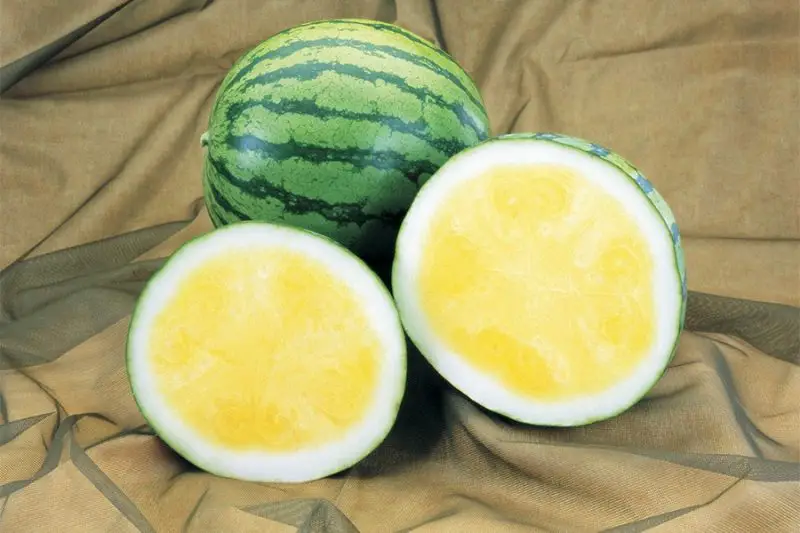
Amarillo is a yellow-fleshed hybrid watermelon that stands out for its crisp texture and mild, sweet flavor. The fruits are medium-sized with a pale green rind and typically weigh around 10 to 15 pounds. Its compact vines make it a great choice for smaller gardens or raised beds.
This variety performs well in USDA zones 3 to 10 and matures in 75 to 85 days. Amarillo thrives in full sun with loose, sandy soil and consistent watering. It’s a good option for regions with limited space or shorter growing seasons.
Once mature, Amarillo watermelons offer a refreshing and lightly tropical taste. Their sunny yellow interior adds a splash of color to fruit salads and picnic plates, making them both tasty and visually appealing.
Vanessa
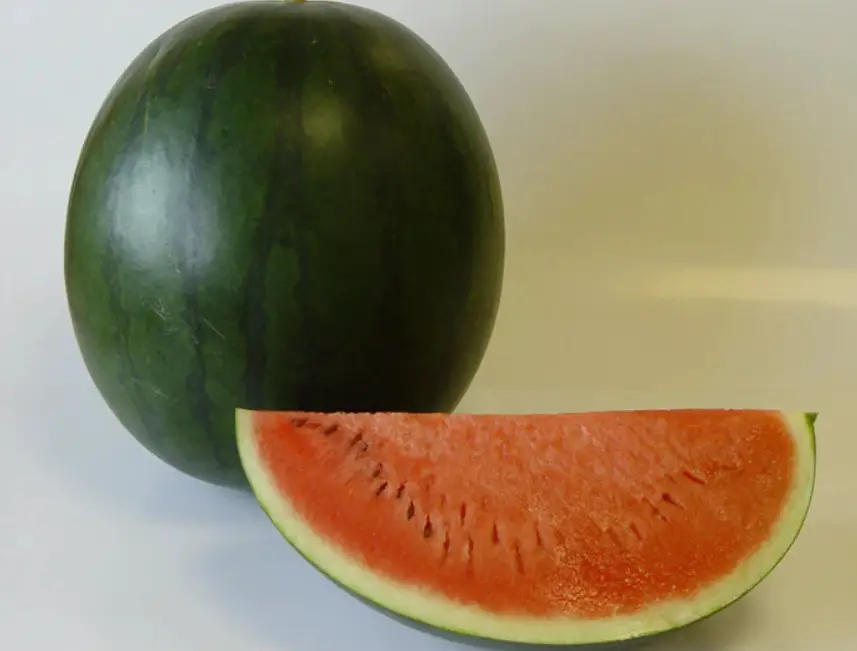
Vanessa is a hybrid watermelon that delivers high yields of small, round fruits with deep red, sugary flesh. The fruits typically weigh around 5 to 8 pounds, making them a convenient and portable size for individual servings or small families.
It grows well in USDA zones 4 to 10 and is prized for its fast growth and adaptability. Vanessa matures in about 75 to 80 days and requires full sun, regular irrigation, and fertile soil. It also stores well post-harvest, maintaining its sweetness and texture for extended periods.
Thanks to its compact size and delicious flavor, Vanessa is an excellent choice for both home gardeners and market growers. The melons are ready to pick when the ground spot turns yellow and the stem tendril dries up.
Rattlesnake
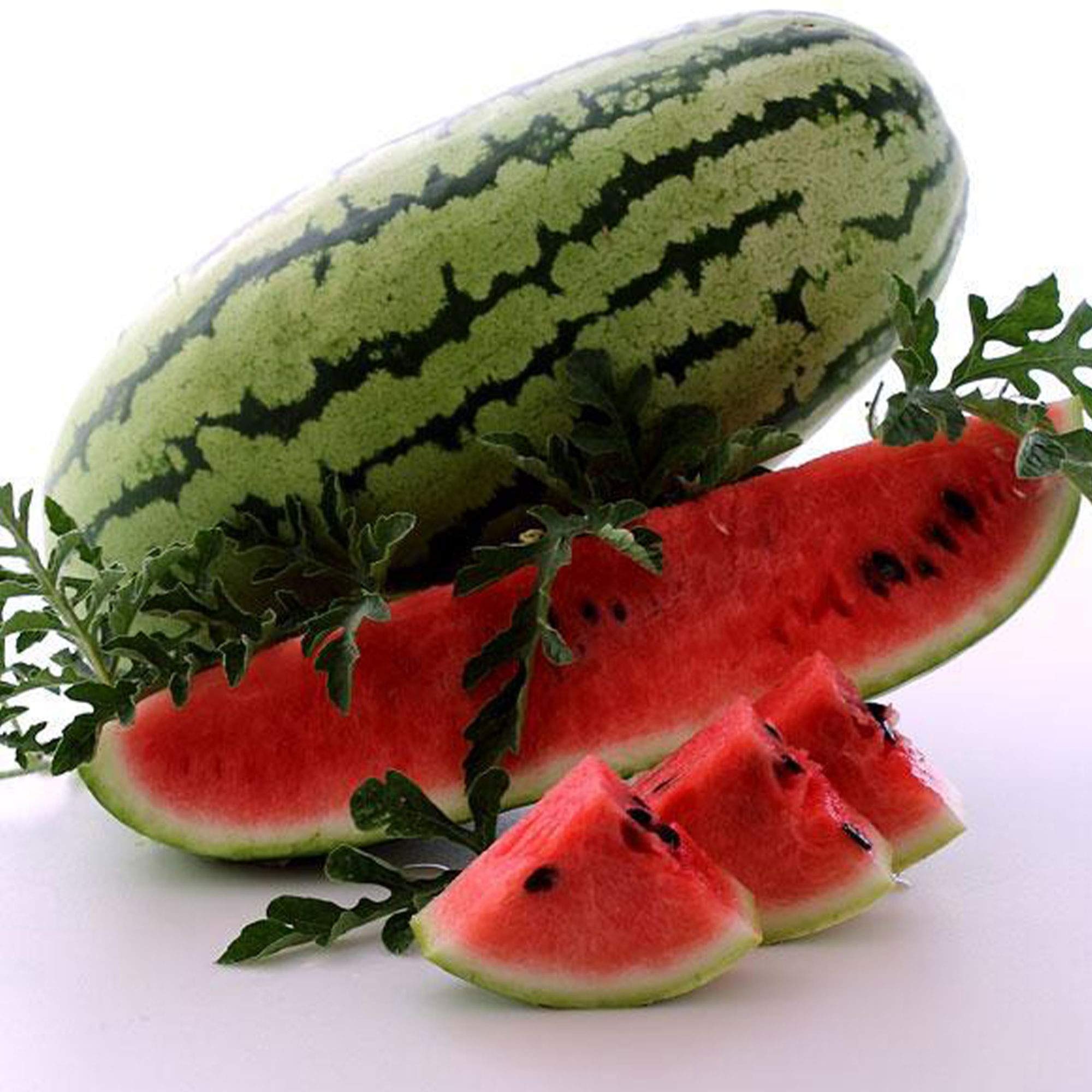
This Rattlesnake variety is an heirloom that produces long, cylindrical melons with vivid green stripes on a pale background. The flesh is bright red, crisp, and intensely sweet, making it a summertime favorite for many traditional gardeners.
It thrives in USDA hardiness zones 4 to 10 and matures in about 85 to 90 days. The vines are vigorous and sprawling, requiring plenty of space to grow. Full sunlight, warm temperatures, and regular watering are essential for optimal fruit development.
Rattlesnake melons are typically large, weighing 25 to 35 pounds. They’re harvested when the underside yellows and the tendril nearest the fruit dries. Their unique appearance and bold sweetness make them a standout at farm stands and gatherings.
Navajo Sweet

Navajo Sweet is a culturally significant watermelon variety known for its ability to thrive in arid, dry climates. The melons have dark green rinds with sweet, deep red flesh inside. Weighing around 15 to 20 pounds, they are perfect for both tradition and taste.
It does well in USDA zones 5 to 9 and typically matures in 85 to 95 days. This variety is especially adapted to dry conditions, requiring less water than many modern cultivars. Still, deep, occasional watering and full sun are necessary for high-quality fruits.
Navajo Sweet watermelons are ideal for home gardens in desert and prairie regions. They’re often grown for both cultural preservation and culinary use, offering exceptional flavor and historical significance.
Sweet Dakota Rose
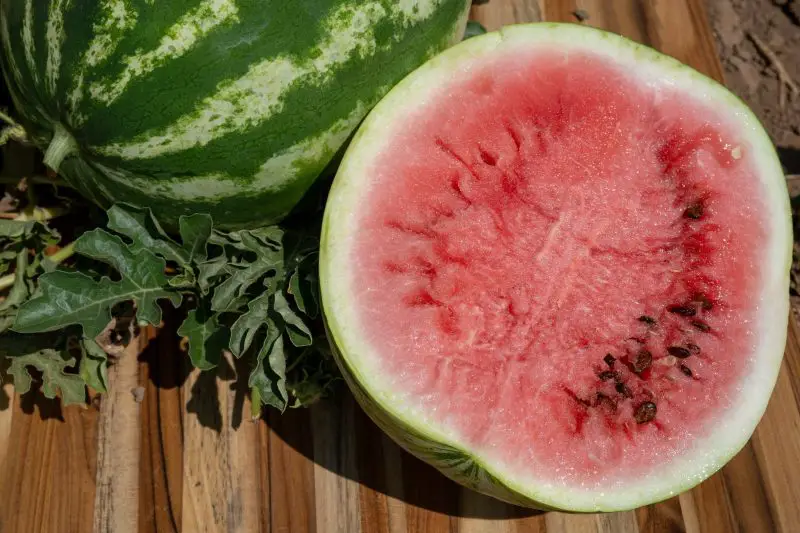
Sweet Dakota Rose is a fast-maturing heirloom watermelon that was developed for northern climates with short summers. The fruit features dark green skin and pink-red flesh that is sweet and juicy. Each melon typically weighs between 8 to 12 pounds.
It grows best in USDA zones 3 to 8 and matures in just 70 to 80 days, making it ideal for cooler regions. The plants are compact and require less space than sprawling southern varieties, although they still need full sun and rich soil for the best yields.
Harvest when the bottom spot turns creamy yellow and the tendril near the stem dries. Sweet Dakota Rose is a great option for gardeners seeking reliable, early harvests in temperate areas where most watermelons struggle to fully ripen.
Picnic
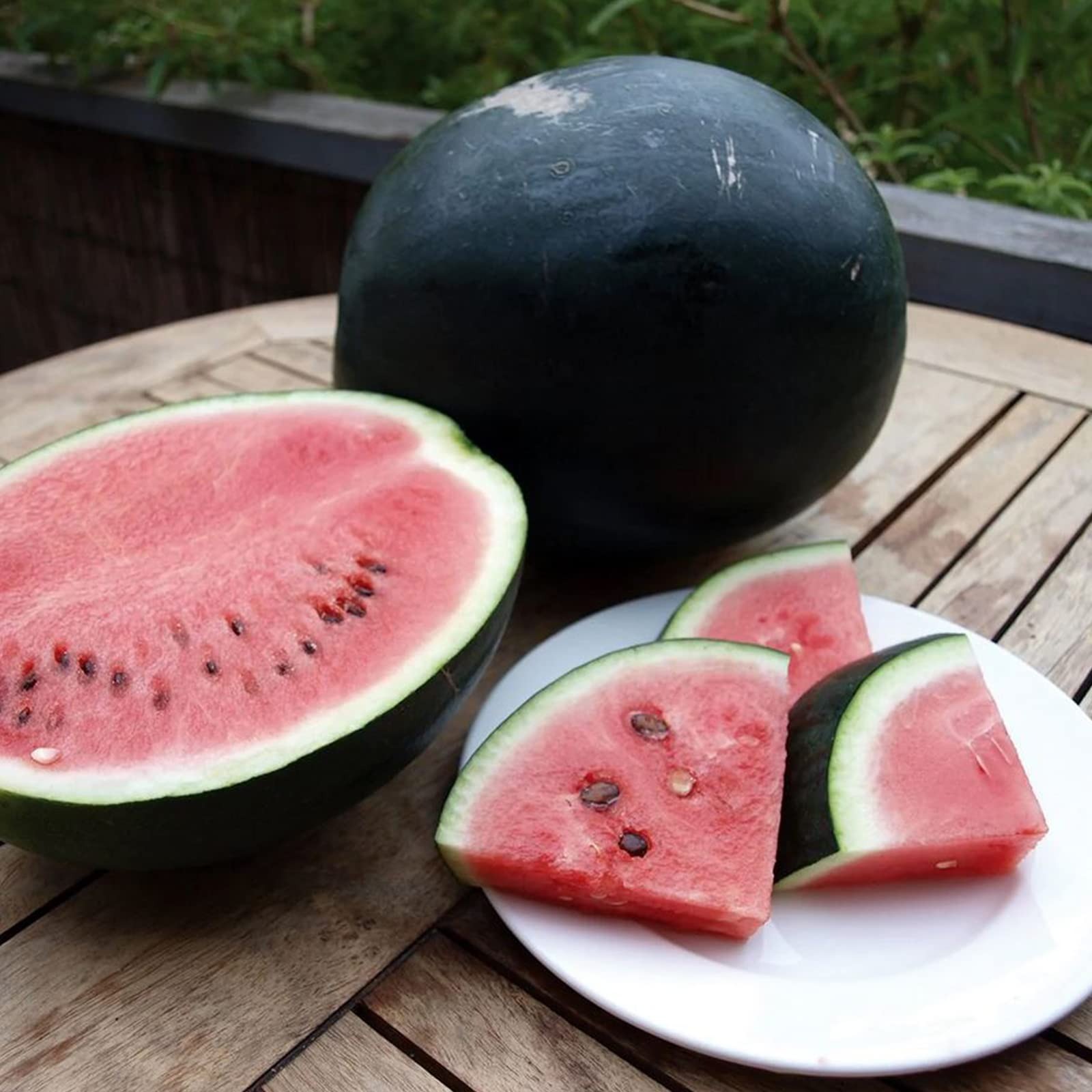
Picnic watermelons are classic large-fruited types ideal for family events and summertime gatherings. They generally weigh between 20 to 40 pounds and feature thick green rinds with juicy, sweet red flesh inside. These melons are perfect for slicing and sharing.
They perform well in USDA zones 4 to 10 and require a long, warm growing season of 85 to 95 days. Picnic types grow on large, sprawling vines that need room to expand, along with well-draining soil and regular watering to produce hefty fruits.
Picnic watermelons are known for their durability, making them great for transportation and display at farmers markets or events. Their robust size and delicious taste make them a summer favorite across many regions.
Sweet Princess

Sweet Princess is a hybrid variety that produces medium-sized melons with bright red, fine-textured flesh. The fruits typically weigh 15 to 20 pounds and are oval in shape, with a green rind that often shows faint striping.
This variety grows well in USDA zones 4 to 10 and matures relatively early—around 75 to 80 days. It’s favored by both home gardeners and small-scale farmers for its dependable yield, disease resistance, and sweet flavor.
Sweet Princess melons are ready to harvest when the belly of the fruit turns creamy yellow and the stem tendril dries out. They’re perfect for slicing and fresh eating, offering a satisfying crunch and sweet taste in every bite.







Hello.
I have a drawer full of seeds in zip lock bags that I received from family members. Unfortunately, they don’t have any names of seeds, pictures of the plant or fruit, or instructions on how to plant. Do you have a pamphlet or magazine with this information or could you recommend a place I could get some information? I am retired on disability, but would like to have my grandchildren help me plant and get to watch the plants grow.